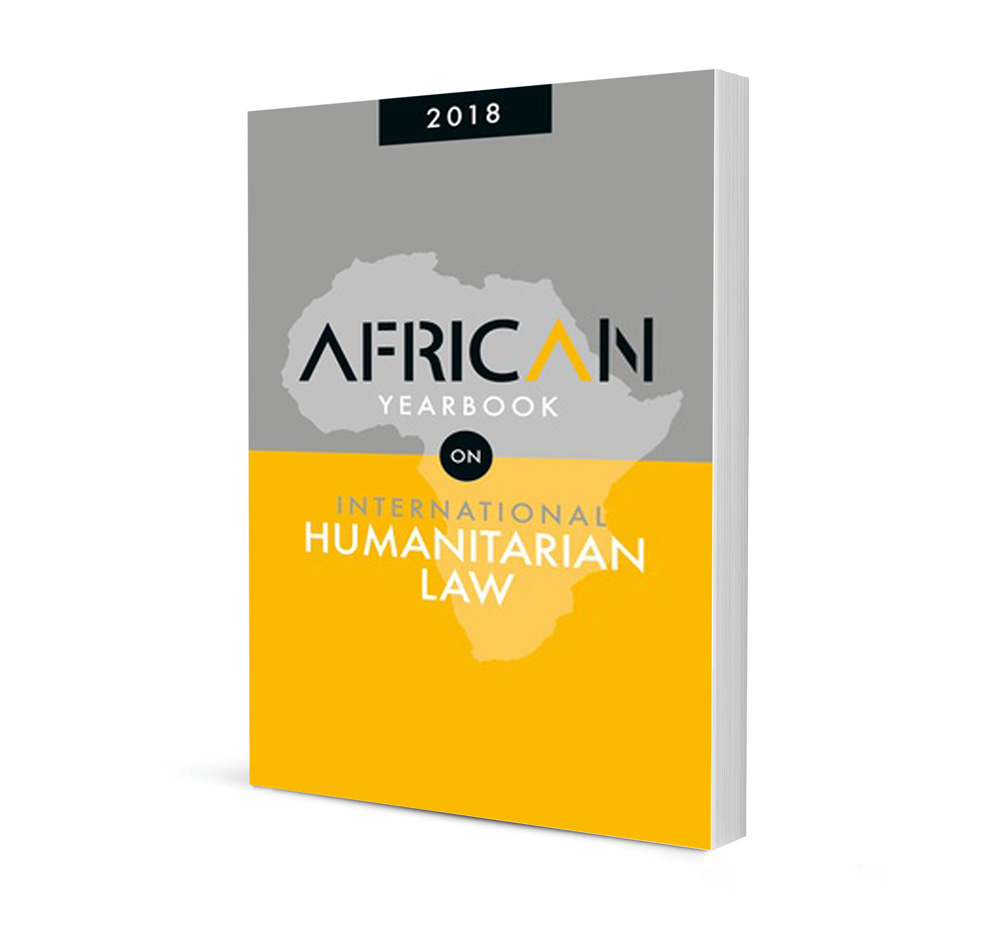Nuclear Non-Proliferation and Disarmament

Nuclear Non-Proliferation and Disarmament
Authors Marieke Roos
ISSN: 2521-2621
Affiliations: None
Source: African Yearbook on International Humanitarian Law, 2016, p. 151 – 162
Abstract
None

ISSN: 2521-2621
Affiliations: None
Source: African Yearbook on International Humanitarian Law, 2016, p. 151 – 162
None

ISSN: 2521-2621
Affiliations: Class of 1975 Alumni Professor of Law and Director, Transnational Law Institute, Washington and Lee University
Source: African Yearbook on International Humanitarian Law, 2016, p. 144 – 150
None

ISSN: 2521-2621
Affiliations: Professor of Public International Law, University of Johannesburg
Source: African Yearbook on International Humanitarian Law, 2016, p. 137 – 143
None

ISSN: 2521-2621
Affiliations: Extraordinary Professor of International Law, Centre for Human Rights, University of Pretoria, Distinguished Professor of International Law and International Relations, University of Lilongwe, Malawi, and Fellow, Carr Centre for Human Rights Policy, Harvard Kennedy School of Government
Source: African Yearbook on International Humanitarian Law, 2016, p. 108 – 136
Africa is a continent which has experienced some of the world’s worst mass atrocities. Notwithstanding the provision of the right to intervene in a member state in the face of war crimes, genocide and crimes against humanity under Article 4(h) of the Constitutive Act of the African Union and construction of an ambitious continental human rights protection architecture, Africa is still a continent riddled with conflicts where mass atrocities have flourished. This paper advances a concept of ‘persuasive prevention’— a graduated approach to secure respect for human rights and humanitarian norms as well as conflict prevention strategies through constructive engagement by civil society and the international community with potential perpetrators, backed by credible multilateral enforcement mechanisms. The aim of the Article 4(h) intervention should, first and foremost, be to prevent mass atrocities from occurring and, where mass atrocities are occurring; intervention should be aimed at protecting the populations at risk and the pursuit of perpetrators.

ISSN: 2521-2621
Affiliations: Challis Chair of International Law, Sydney Law School, University of Sydney, Australia
Source: African Yearbook on International Humanitarian Law, 2016, p. 85 – 107
Much has been written about the various international legal aspects of the Western Sahara dispute, yet there has been little attention to the legal classification of the violence which engulfed the then Spanish Sahara in 1974-1976. This article closely examines the historical record in order to identify how international humanitarian law applied leading up to and during the Spanish withdrawal and the attainment of control by Morocco and Mauritania. In particular, it finds that there existed a series of five consecutive and/or parallel conflicts of different legal characters, including three non-international armed conflicts (involving Polisario against Spain, Morocco and Mauritania respectively) and two international armed conflicts (between Spain and Morocco, and Morocco and Algeria). (The non-international conflict between Morocco and Polisario was also transformed into an international (self-determination) conflict as a result of the application of Additional Protocol I of 1977 in 2011.) The legal classification of the hostilities is not merely of historical interest, but has continuing consequences for the legal responsibility of states, and the criminal liability of individuals, for violations of international humanitarian law in each of the conflicts. Accountability is likely to be an important aspect of a comprehensive peace settlement and post-conflict justice.

ISSN: 2521-2621
Affiliations: Associate Professor, Nelson R Mandela School of Law, University of Fort Hare
Source: African Yearbook on International Humanitarian Law, 2016, p. 65 – 84
The Law of Armed Conflict (‘the LOAC’) incorporates terms and concepts that, on initial scrutiny, appear uncomplicated. However, the meaning and practical application of several concepts within the LOAC have often proven to be highly ambiguous and contested. The notion of ‘Civilian Direct Participation in Hostilities’ (‘C-DPH’), found, arguably, in Common Article 3 of the Geneva Conventions of 1949 and explicitly in Additional Protocol I of 1977, Article 51(3), and Additional Protocol II of 1977, Article 13(3), represents one such contested concept. C-DPH is a cornerstone concept in the LOAC and has attained the status of customary international law. On a conceptual level, civilians should be protected from intentional attack unless, and ‘for such time’, as they ‘directly participate in hostilities’. However, no definition of C-DPH or an indication of the actions that amount to C-DPH exist in the Geneva Conventions or in the Additional Protocols, despite the serious practical and legal consequences that may result from such participation. It is therefore imperative to establish a universal, comprehensive and practical definition of C-DPH.